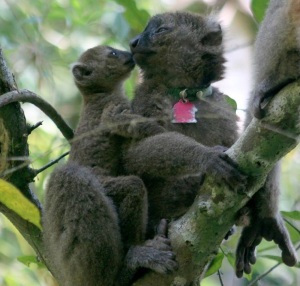Lemurs are the most endangered mammals on earth and greater bamboo lemurs are among the most imperiled. That puts them in a lot of trouble. However, it is thanks to the Aspinall Foundation’s efforts in Madagascar that they stand a chance of survival.
The estimated 500 individuals live in an area only 4% the size of its former range. This has seen it named repeatedly on the IUCN’s 25 most endangered primates list, replaced in the latest additional by another animal I am running for – the indri.
They are incredibly unique beings. The bamboo they enjoy contains cyanide and they eat daily doses which would be enough to kill multiple humans. They are highly specialised creatures and have evolved over millions of years to thrive on this niche. However, that is part of their problem.
Climate change is a key issue the world over, and sadly greater bamboos are one of the first to be feeling its effects. Shifts in rainfall patterns has meant there isn’t always enough fresh shoots and leaves. This means they have to eat tougher bamboo stalks and permanently damage their teeth. If you don’t have teeth then you can’t eat.
This is a particularly difficult time of year for greater bamboo lemurs – cyclone season. The Aspinall Founation has unfortunately found lemur victims among the devastation left by these tropical storms. From the picture used above, the Madagascar Biodiversity Partnership have said that the mother Padame is missing. This isn’t just a huge blow for her baby boy but potential future generations.
The situation for greater bamboo lemurs is bleak. That is why it’s vital that we act now.

